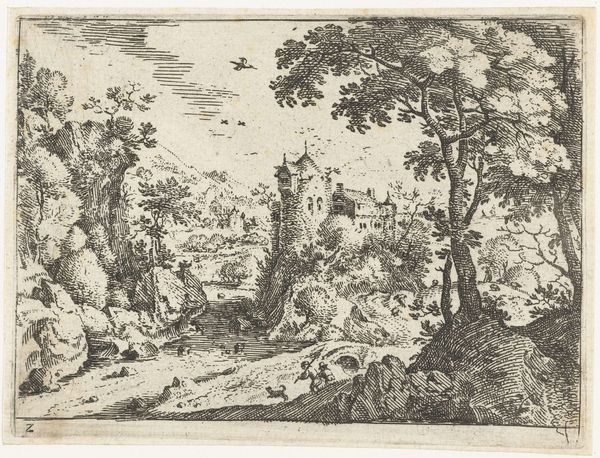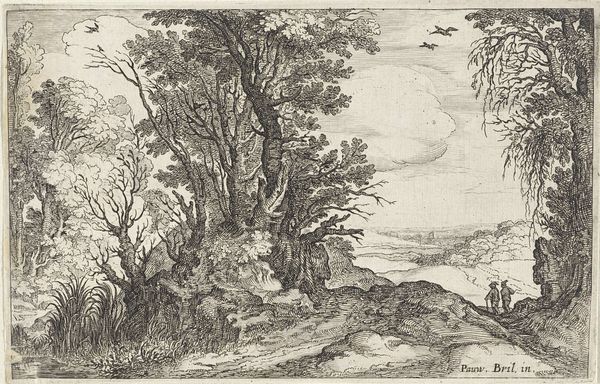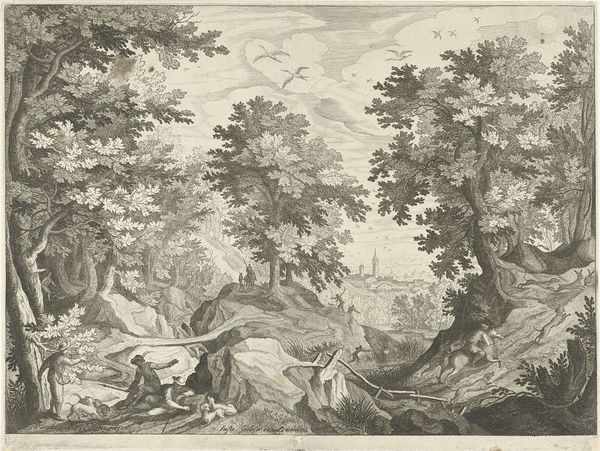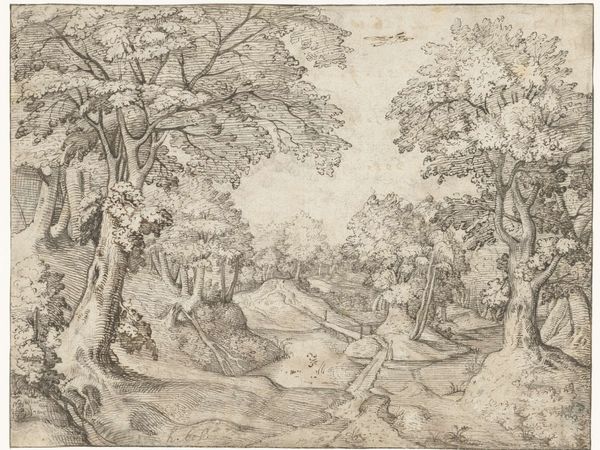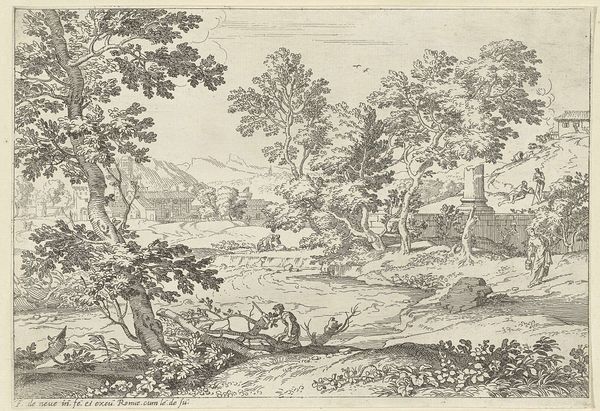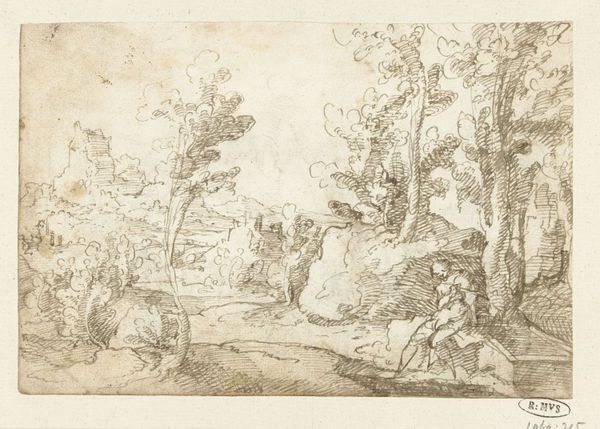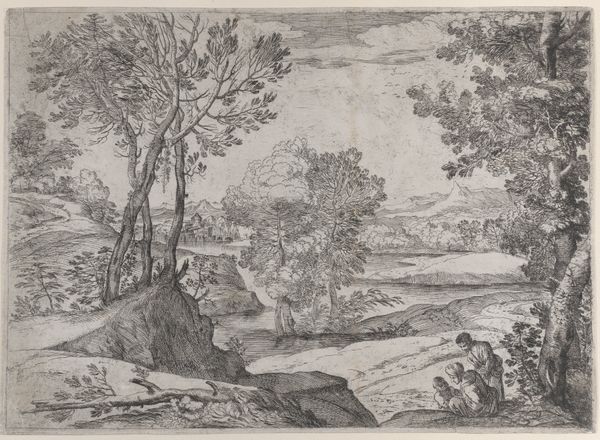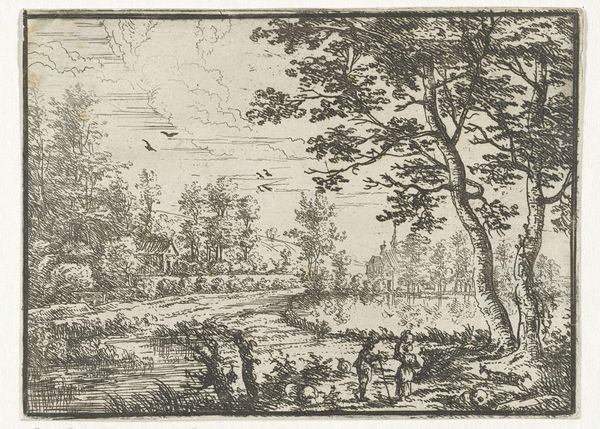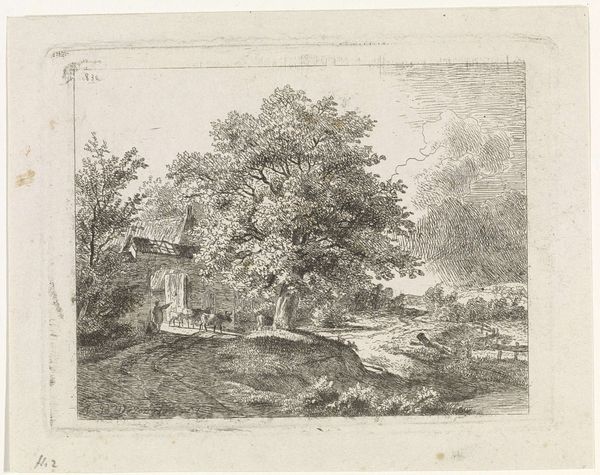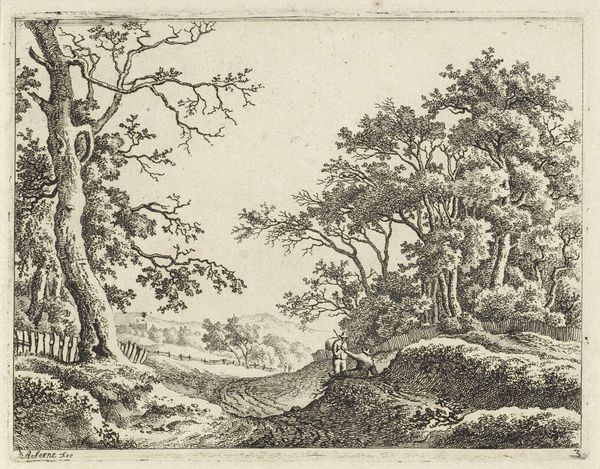
print, etching
#
ink drawing
#
pen drawing
# print
#
etching
#
landscape
#
genre-painting
#
realism
Dimensions: height 380 mm, width 512 mm
Copyright: Rijks Museum: Open Domain
Editor: We're looking at "Landscape with the Parable of the Tares among the Wheat" by Jacob Matham, created around 1605. It's an etching and quite detailed. I'm struck by how it captures a moment of seeming idleness juxtaposed with labor in the fields. What are your initial thoughts about the artwork's historical context? Curator: It's fascinating to view this print through the lens of its social climate. These idyllic landscapes gained popularity as urbanization increased, offering a vision of a simpler life. However, they were also deeply connected to religious and political debates of the time. Notice the parable depicted. Editor: The title is "Landscape with the Parable..." does that mean the figures are illustrating the biblical parable, then? Curator: Precisely. This etching isn't merely a pastoral scene; it’s a commentary. The "weeds among the wheat" are a potent metaphor for moral corruption and the challenges to religious orthodoxy in 17th century Europe. These genre scenes gain importance when tied to specific ideas, religious or not. Editor: So the sleeping figures represent perhaps those who aren't actively combating this corruption? Curator: That's one interpretation. Consider who was buying these prints. Were they meant as a gentle reminder to the wealthy elite, or a stark warning about social unrest? The Rijksmuseum being the home now changes how we percieve it. Does that influence your interpretation? Editor: It does make me wonder who first saw it, but placing it in a museum today changes the audience, so the museum's values are involved, too. Curator: Exactly! We must consider how its meaning evolved as its audience and location changed. Editor: This gives me a whole new way to think about landscapes; thank you for your thoughts. Curator: And thank you. Thinking about this artwork from different temporal contexts enriched my understanding.
Comments
No comments
Be the first to comment and join the conversation on the ultimate creative platform.
